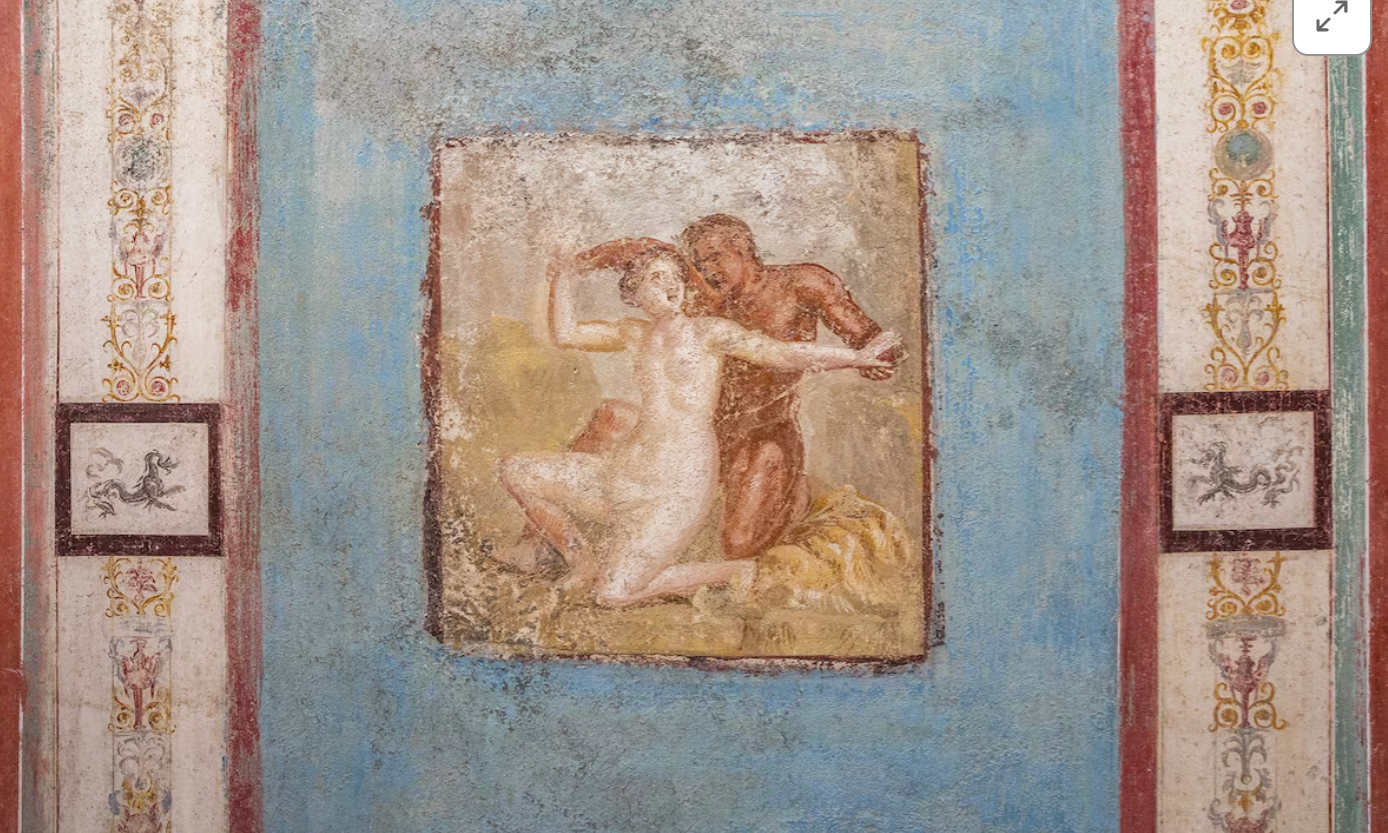The small residential unit was discovered at the ancient city during ongoing investigations at the Amanti Island insula
Courtesy of Pompeii Ufficio Stampa
Archaeologists at Pompeii have unearthed a new residence decorated with a series of frescoes including some erotic scenes. One shows a satyr embracing a naked nymph, while another depicts Phaedra who, according to Greek legend, became infatuated with her stepson Hippolytus. A third painting shows a couple who may be Venus and Adonis.
The small residential unit was discovered at the ancient city during ongoing investigations at the Amanti Island insula, a city block in the central quarter of Pompeii, along Via dell’Abondanza, says an online project statement.
“A window, next to the painting with Hippolytus and Phaedra, opens onto a small courtyard, where construction work was in progress at the time of the eruption, reflected at the entrance by the presence of a small lararium (domestic altar) with a painted decoration [comprising] plant and animal motifs on a white background,” the statement continues.
The newly discovered house is notable for having no atrium. “[This is] a peculiarity considering that, despite the small size of the mansion, it would not have been impossible to insert a small atrium with a classic bathtub and shower for collecting rainwater,” the statement adds.
“More than an atrium, it was clothes and jewels that were beginning to show status. Having no atrium was starting to be a choice and we see that trend emerging at Pompeii,” Gabriel Zuchtriegel, the director of Pompeii archaeological park, told The Times.
The erotic discovery is the second in recent months, following a similar find last year
Courtesy of Pompeii Ufficio Stampa
Pompeii’s archaeologists outline in a statement why this excavation is key, explaining that the construction and restoration underway at the Amanti Island insula is complex. “The site is divided into two different areas, some of which have already been concluded, and which make it possible for the public to enjoy through a system of elevated walkways. The different phases include the design and construction of the new roof; the archaeological excavations; [reinforcing] the elevated walls; the restoration of surfaces and archaeological elements,” they say.
Zuchtriegel adds: “This is an example of public archaeology or, as I prefer to call it, circular archaeology—conservation, research, management, accessibility and results form a virtuous circle. Excavating and restoring under the eyes of visitors, but also publishing the data online on our e-journal and on the pompeiisites.org platform means… full transparency regarding what we do, not for the good of a small circle of scholars, but for everyone.”
Last year a vast residence was unveiled in Pompeii which was also adorned with erotic frescoes including an image depicting Priapus, the god of fertility, with a giant phallus resting on a weighing scale loaded with money.
Pompeii was engulfed by volcanic ash in 79AD spewing from nearby Mount Vesuvius.

